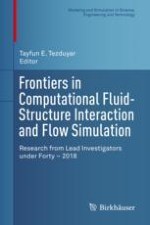2018 | OriginalPaper | Buchkapitel
A General-Purpose NURBS Mesh Generation Method for Complex Geometries
verfasst von : Yuto Otoguro, Kenji Takizawa, Tayfun E. Tezduyar
Erschienen in: Frontiers in Computational Fluid-Structure Interaction and Flow Simulation
Aktivieren Sie unsere intelligente Suche, um passende Fachinhalte oder Patente zu finden.
Wählen Sie Textabschnitte aus um mit Künstlicher Intelligenz passenden Patente zu finden. powered by
Markieren Sie Textabschnitte, um KI-gestützt weitere passende Inhalte zu finden. powered by
